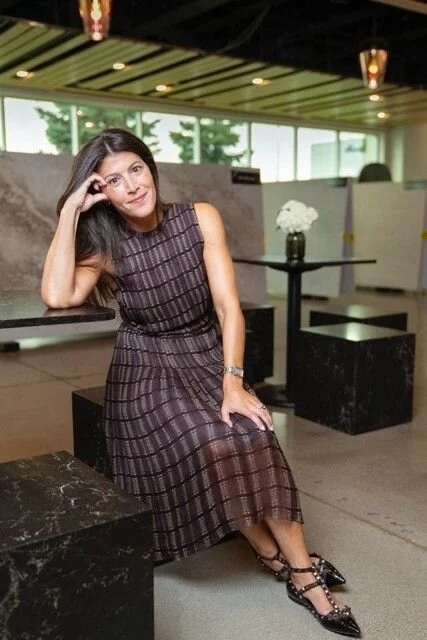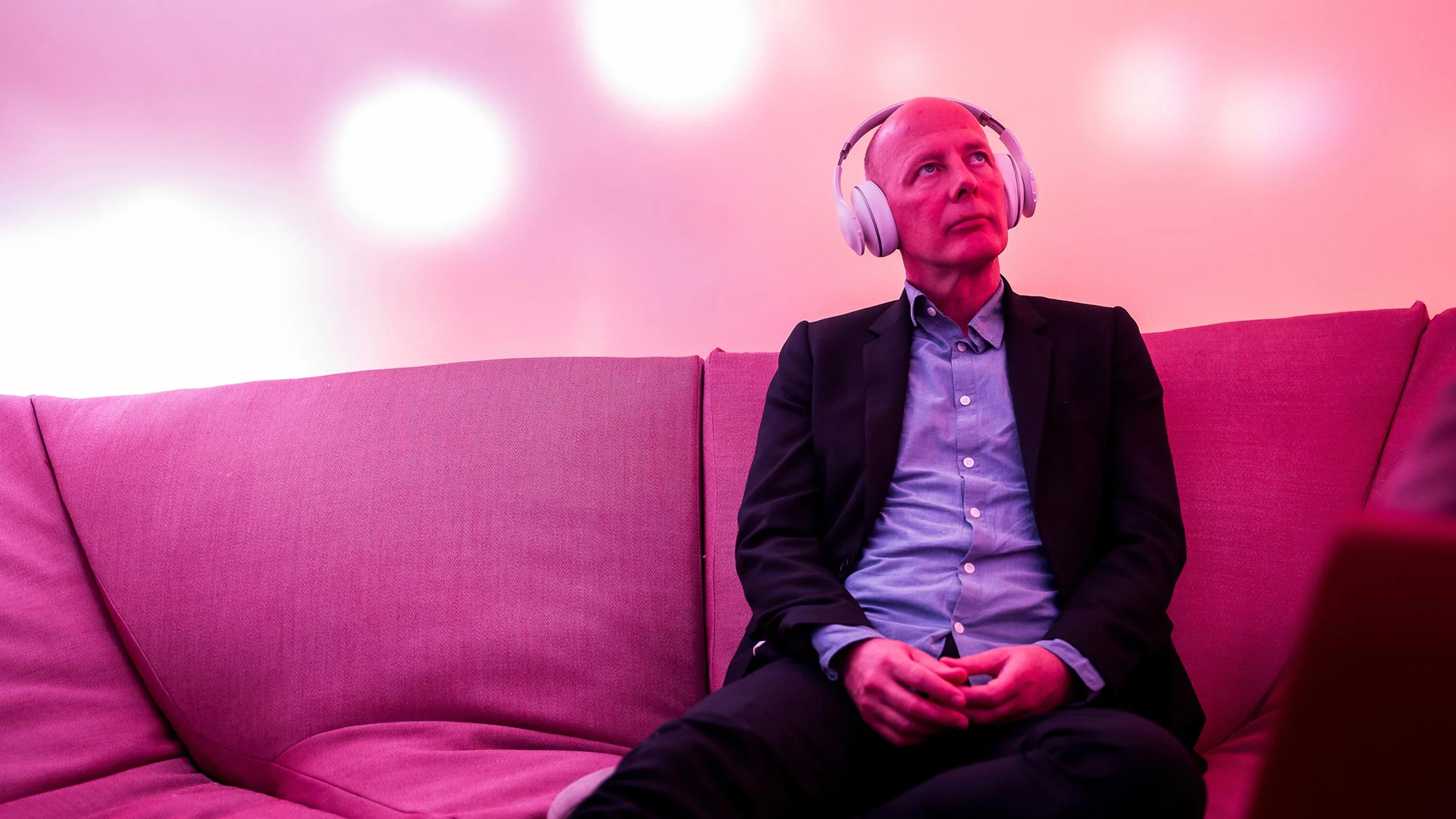With more people working remotely than ever before, and an uptick in gig-type occupations, coworking spaces have emerged as a popular and cost-effective option for businesses and the part-time, full-time and contract workers they employ. In an effort to tap into the global talent pool, more and more large companies are providing access to coworking spaces around the world. In fact, the number of coworking spaces worldwide has increased by 1,000 percent in the last five years.
Change by Design: A New Framework for Leading Continuous Change
Courtesy of a global, networked economy, change now happens faster and with less warning or pattern than ever before. Today, change is the new normal. So how do you harness change as a force for improvement and innovation? How do you create an organization where change is part of its DNA?
Workplace change has the power to inspire people to transform organizations, taking them to the next level. Yet the conventional approach to workplace change has concentrated on controlling chaos and handling resistance until things return to normal.
The future workplace: trends, technology and evolution
The workplace of the future is one that is mobile, flexible and IT-intensive. Advances in many areas of technology have reformed the future workplace, and conventional practices are no longer as relevant as before.
The Impact Hub is one entity that has arisen from such changes, redefining what a workspace could be. It consists of a global network of people, places, and programs that inspire, connect and catalyse impact, all condensed into one collaborative space. What began as a single Hub in London in 2005 has evolved into a rapidly expanding, diverse global network of more than 15,000 members in over 80 locations.
Beware the great apex fallacy of workplace design
Of all the memes and narratives that corrupt public discourse about workplace design, the most pernicious is the one that suggests there is a linear evolution to some grand end point called the Office of the Future. There is a natural human inclination to buy this sort of idea, fed by an assumption that what we find most interesting, aspirational and hence what we read and talk about forms a goal. Read any style magazine and you’ll see the same process at work in every facet of our lives. This is why so many people are quick to consume and then regurgitate the idea that what we see happening in the world’s great tech palaces and creative offices represents the apogees of design to which the rest of us must one day succumb. It rests on misguided assumptions about what really goes on in such offices and what these assumptions mean for firms in other sectors. It is the great apex fallacy of workplace design and it is one we must constantly challenge.
BEAN BAGS AND SLIDES: WHAT IS THE MOST PRODUCTIVE WORKPLACE ENVIRONMENT?
“A really poor aesthetic working environment can have an negative effect on employees psychologically, because it conveys indirectly to the individual that the organisation doesn’t care about them. It says that they are just ‘worker bees’ or disposable assets,” Sir Cary Cooper, professor of organisational psychology and health at Alliance Manchester Business School, says.
Green Offices May Be the Key to Productivity—and Employee Health
What really improves employee performance? Better accessibility and technology? Streamlined communication? Great company perks? While those things certainly don’t hurt, environmental features, like lighting and air quality, may play a bigger role than you ever imagined. A number of recent studies confirm that conventional office design could be slowly crushing employee productivity from within—and that “greening” spaces with selective materials and health-conscious decor could be the key to eliminating production lag.
How the physical space you spend time in every day affects your brain
The modern office is no longer a grey room and some cubicles. It’s a mix of hot-desking, open plan layouts and co-working spaces. Flexible working, “jelly bean working” and virtual offices. With so many new trends and alternatives, deciphering what is the best option for you and your business can be a difficult task.
Workplace design must change to combat "epidemic" stress levels says UNStudio founder
Secluded pods that allow office workers to meditate, smash things or scream will be commonplace in two years time says UNStudio founder Ben van Berkel, after research found that stress-related illness costs the US economy $300 billion a year.
The Dutch architect claims that many big companies will install breakout pods in their workplaces in the near future to combat the "epidemic" levels of stress experienced by office workers all around the globe.
MOBILE TECH BRINGS OFFICE WORKERS OUTSIDE
The trend that has made mobile technology as vital for many people as food and water has vast societal implications—far too many to consider in a modest blog post. What we’d like to take a brief look at is the freedom mobile tech gives office workers to take their work outside.
How Etsy Built the Greenest Office Space in Tech
The company just scored a Petal certification from the Living Building Challenge. Next on the agenda: achieving zero waste by 2020—and maybe convincing other tech companies to follow its lead.
Here's Why It Matters That Millennials Hate Where They Work
Graduating from college is as daunting as it is exciting. Young adults leave the familiarity of their campuses and classrooms and head into the vast unknown that is the workforce. There are so many new, moving parts that it's no surprise an overwhelming number of companies found their employees are often "lost in transition" right after graduation.
4 OFFICE DESIGN IDEAS TO IMPROVE COLLABORATION
Offices are embracing open-concept layouts as a way to improve communication and collaboration between employees, but removing walls and cubicles is only the starting point. There are several items you can tackle in your office design to overcome the challenges associated with open office working and encourage increased collaboration.
Here are four of the most popular design ideas to improve collaboration in open offices.
More needs to be done to boost happiness in the workplace, claims study
A new report from Office Genie claims to identify the factors that affect the happiness British staff in the workplace. While the average level of workplace happiness for British employees sits at 3.63/5, the study of 2,000 staff claims to have found some serious causes for concern. Junior staff were the least happy in the workforce: they rank at 3.40 on the happiness scale – comparatively, business owners rank at 4.20 – a significant 25 percent higher. Of further concern, according to the report, was the fact employees with mental health issues feel unsupported in the workplace: Over half (51 percent) of such respondents believe their place of work offers inadequate levels of support. Amongst this demographic the most called-for support method is wellness initiatives, with 45 percent of people with mental health issues saying they would be beneficial – well above the overall average.
The Gig Is Up: Saying Hello To Your Dream Workplace
The ‘gig’ workers – often referred to as consultants, contractors, freelancers or temp workers – are ultimately changing the corporate landscape and how we work. Companies can now much more easily hire non-permanent employees on an as-needed basis, while gig workers are enjoying the freedom, flexibility and work life balance they crave. Everyone wins.
Top 10 Trends Influencing Workplace Design
Many large countries — including the US, China, Japan, Germany and Italy — will face talent shortages as their workforces age and experience declining growth rates. In the United States, the labor force is expected to grow only 0.7 percent between 2010 and 2020. Skills predicted to be in demand include management, legal, sales/marketing, operations and technical computer proficiency.
This talent shortage will challenge organizations to find and keep the best people. They will need to engage employees with workplaces that support their wants and needs.
Atlanta is Designing Office Spaces To Be Your New Fitness Coach
Forget LA Fitness — workplaces are now playing an active role in helping employees maintain good health and wellness. Atlanta is a forerunner in this shift, as the city is a home base and innovation hub for the new Active Design movement.
Active Design for your office space is about getting you in motion. Health-conscious business leaders are now asking their interior designers and architects to build opportunities into the workspace to get employees out of their seats.
THE IMPORTANCE OF COLOR IN THE WORKPLACE
Last year, a news story was released about the discovery of the world’s ugliest color, Pantone 448C, which was used by the Australian government on tobacco packaging to discourage smoking. This, and many other strategies are the result of the increasing amount of insight in recent years on color theory, which surrounds the meanings, effects, and use of color.
Office checkup: 9 ways to make your space healthier
What is a healthy workplace, exactly? The answer should be clear by now. Piles of research have dug into this topic, and then news outlets cover the latest discovery ad infinitum.
The problem is, research is rather dense, while the news isn’t comprehensive. Office managers trying to improve workplace wellness want neither a 55-page report nor a half dozen articles to convince their landlord that their space can do better.
Looking To The Next Generation For Office Space Needs
A rapidly growing number of professional service firms are redesigning their office spaces to align with the “workplace of the future” and reap benefits including improving collaboration, client and partner service, employee recruitment and retention and technology integration. Along the way, they are recognizing that the process is far more complex than merely relocating to a trendier part of town. Savvy firms are deploying proven methodologies to overcome the obstacles and maximize the opportunities.
America’s Toxic Workplace Rules
Last month, President Trump’s nomination of R. Alexander Acosta to be secretary of labor was approved by a Senate committee, even though the nominee’s testimony had left unclear whether he would be more interested in protecting employers’ prerogatives than in guarding workers’ interests.
We may soon find out, and here’s one test — an issue of worker health that President Barack Obama’s Labor Department tried to resolve, without much success: Why does the department’s Occupational Safety and Hazard Administration allow workers to be exposed to dangerous chemicals at limits far higher than those set for everyone by the Environmental Protection Agency?

























